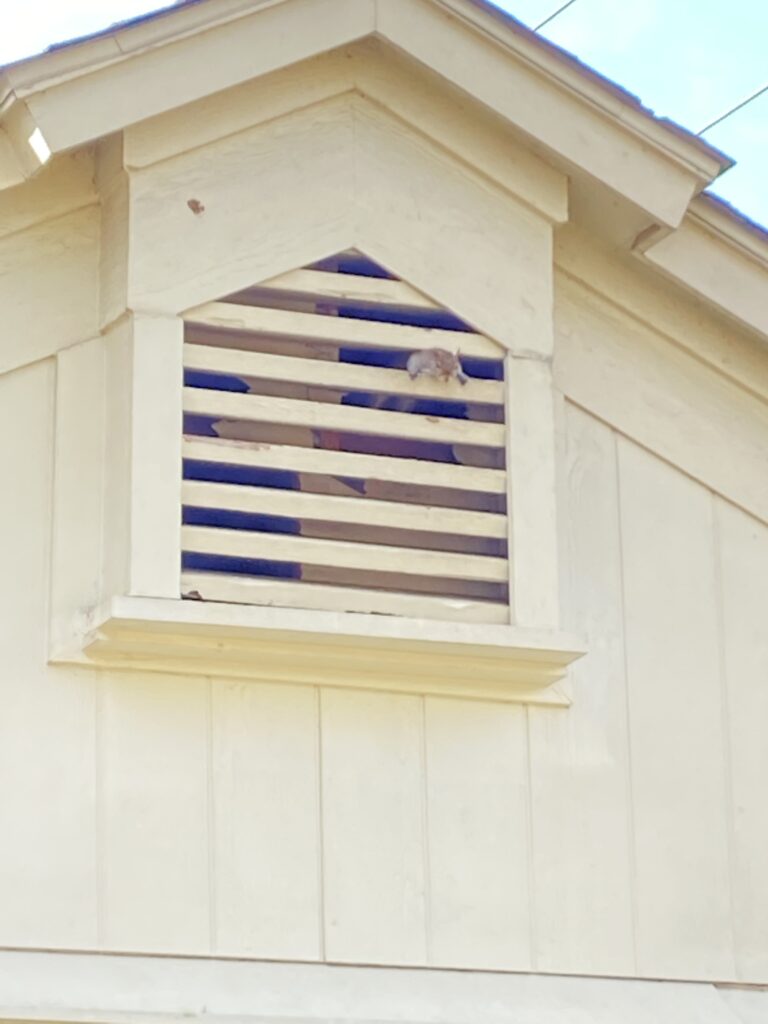By Roger Maul, Region Sales Manager for Critter Control
As Houston grows and expands, so does the risk of squirrel infestations. While they may seem cute and harmless, squirrels are responsible for significant damage to homes and infrastructure. As a professional in wildlife management, I’ve seen firsthand how these furry creatures can wreak havoc, especially in urban settings like ours. Let me walk you through some key points to remember when it comes to squirrel infestations, particularly in Houston.
The Impact of Land Development on Local Wildlife
Houston’s land development directly contributes to the displacement of native species, including squirrels. When one species is displaced, the entire ecosystem feels the effects. Squirrels, like all animals, are driven by their need for three things: food, water, and shelter. As we build new homes, offices, and infrastructure, we’re inadvertently providing these animals with more shelter, driving them into attics, vents, and even weep holes in our homes.
Squirrel Behavior and Why They Love Your Home

Squirrels are highly adaptive animals. They can jump 5 to 6 feet vertically and 8 feet horizontally, which means even if you think the tree branches are far enough from your house, they can easily find their way in. Their natural ability to chew, particularly to file down their teeth, poses a serious threat to homeowners. Texas homes commonly use PVC and PEX piping, both of which squirrels can chew through, causing costly water damage. In addition, they can gnaw on wires, leading to electrical issues or even fires.
One of the most common entry points for squirrels is the roof, especially through vents created for attic air exhaust. Weep holes, which allow ventilation in homes, are another weak spot that squirrels exploit. In Houston, with its hot and humid climate, homes are particularly vulnerable to these types of entry points.
Recognizing the Signs of a Squirrel Infestation
Most people don’t realize they have a squirrel problem until it’s too late. Because squirrels are diurnal, they’re active during the day and often spend time outside, returning to your attic at night. This sneaky behavior means you might not notice them until you hear scratching or gnawing sounds at sunset, or worse—discover plumbing issues due to chewed pipes. Other telltale signs include fresh wood exposed under paint (from chewing) or tic-tac-shaped droppings scattered around your attic.
One particularly deceptive aspect of a squirrel infestation is their ability to create paths through attic insulation without leaving obvious signs. Squirrels also leave small piles of debris where they chew and build nests.
Year-Round Problem in Houston
Unlike in colder regions, squirrels in Houston don’t hibernate. The warmer climate means that squirrels breed year-round, doubling their birthing season and multiplying their numbers at an alarming rate. This is especially true right now as land development in Houston is displacing more wildlife than ever.
Houston is home to several species of squirrels, including the gray squirrel, ground squirrel, and fox squirrel. These species are now thriving in our urban environments, creating a year-round headache for homeowners.
Squirrel Prevention: It’s Not About Chemicals or Traps
If you think the solution to a squirrel infestation is a quick spray or a trap, think again. The real preventative measures involve physically blocking off potential entry points. Sealing small holes, gaps in roofing, and weep holes are crucial steps to keep squirrels out. However, it’s important to note that common sealants like spray foam are no match for squirrels’ powerful teeth—they can easily chew right through wood.
The best solution is a professional wildlife inspection to identify potential entry points and secure your home. We at Critter Control focus on proactive strategies like sealing gaps and reinforcing vulnerable areas to prevent squirrels from entering your home in the first place.
A Delicate Balance: Protecting Wildlife and Your Home
One final point to remember: in Texas, squirrels are considered a state resource, which means they are protected by law. While they can be incredibly destructive, shooting or harming squirrels is illegal. Instead, if you suspect a squirrel infestation, it’s best to call in a professional wildlife service to handle the problem humanely and legally.
Squirrel Removal in Houston
As Houston continues to expand, the issue of squirrel infestations will only grow. It’s important to be aware of the signs and take preventative steps to protect your home. Remember, squirrels aren’t just pests; they’re part of our ecosystem, and managing them responsibly is key to preserving the delicate balance between urban development and native wildlife.
Stay vigilant, and if you hear that telltale scratching in your attic, don’t wait. Contact Critter Control to assess and address any rodent or wildlife issues before they lead to costly damage.
About the Author

Roger has over 20 years of experience in sales, management, and business development. Roger has over five years helping customers identify nuisance wildlife problems throughout Texas, Oklahoma, Louisana, New Mexico, and Colorado. As Region Sales Manager, he recruits, trains, and mentors Critter Control’s wildlife sales consultants throughout the South Central region.